Bee pollen collection is a part of beekeeping that isn’t very popular, but it is an opportunity for beekeepers to collect their own natural pollen easily. In this guide, I’ll explain what we do at Foxhound Bee Co for collecting pollen and go through the different types of pollen traps and techniques. Harvesting pollen pellets from the bees is a unique skill and is not that difficult to do, but having the right equipment and knowledge helps.
I’ll also talk about how pollen trapping works for the beekeeper as well as the bees, plus some major mistakes a beekeeper can make.
Just a side note on fresh pollen, it is so. much better than anything you can get at a normal store. I equate the dried pollen that is readily available to grape nuts. Hard, round, crunchy things that taste like cardboard.
Fresh pollen is soft and delicate, with a slightly sweet but earthy flavor to it. When you press a fresh pollen pellet in your hand, it dissolves into thousands of grains of pollen. A far cry from the dried out pollen pellet you may have seen before.
Table of Contents
2. Why Beekeepers Collect Pollen
- 5.1 Closing all other entrances
- 5.2 Adjusting to The New Entrance
- 5.3 Top Entrance Pollen Traps
- 5.4 Colony Selection
6. Collecting and Processing Bee Pollen
- 6.1 Harvesting Pollen
- 6.2 Cleaning
- 6.3 Freezing
- 6.4 Packaging and Storage
Bee pollen collection is a part of beekeeping that isn’t very popular, but it is an opportunity for beekeepers to collect their own natural pollen easily. In this guide, I’ll explain what we do at Foxhound Bee Co for collecting pollen and go through the different types of pollen traps and techniques. Harvesting pollen pellets from the bees is a unique skill and is not that difficult to do, but having the right equipment and knowledge helps.
I’ll also talk about how pollen trapping works for the beekeeper as well as the bees, plus some major mistakes a beekeeper can make.
Just a side note on fresh pollen, it is so. much better than anything you can get at a normal store. I equate the dried pollen that is readily available to grape nuts. Hard, round, crunchy things that taste like cardboard.
Fresh pollen is soft and delicate, with a slightly sweet but earthy flavor to it. When you press a fresh pollen pellet in your hand, it dissolves into thousands of grains of pollen. A far cry from the dried out pollen pellet you may have seen before.
Table of Contents
2. Why Beekeepers Collect Pollen
- 5.1 Closing all other entrances
- 5.2 Adjusting to The New Entrance
- 5.3 Top Entrance Pollen Traps
- 5.4 Colony Selection
6. Collecting and Processing Bee Pollen
- 6.1 Harvesting Pollen
- 6.2 Cleaning
- 6.3 Freezing
- 6.4 Packaging and Storage
Key Takeaways
Key Takeaways
- Beekeepers collect bee pollen for economic reasons, to supplement their bees’ diet, and to sell due to its perceived health benefits and uses in various food products.
- Pollen traps are essential tools for beekeepers, designed to collect pollen without hindering bee activity and come in various styles like the full bottom and top traps and front porch or entrance traps.
- Proper pollen processing involves regular collection to prevent molding, cleaning to remove impurities, freezing to preserve quality, and careful packaging for storage or sale, while ensuring good beekeeping practices to maintain colony health.
- Beekeepers collect bee pollen for economic reasons, to supplement their bees’ diet, and to sell due to its perceived health benefits and uses in various food products.
- Pollen traps are essential tools for beekeepers, designed to collect pollen without hindering bee activity and come in various styles like the full bottom and top traps and front porch or entrance traps.
- Proper pollen processing involves regular collection to prevent molding, cleaning to remove impurities, freezing to preserve quality, and careful packaging for storage or sale, while ensuring good beekeeping practices to maintain colony health.
Why Beekeepers Collect Pollen
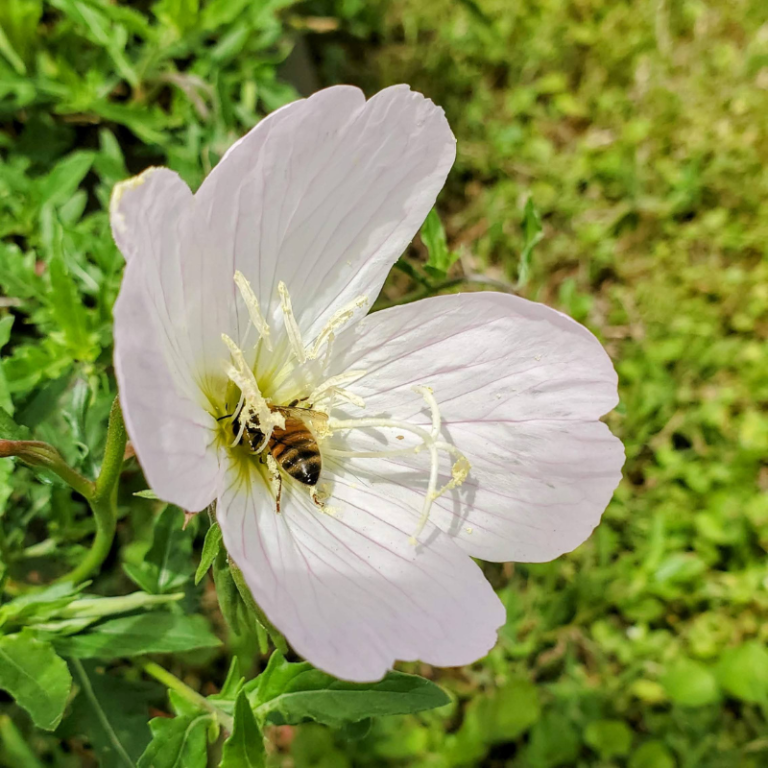
Bees do more than produce honey. They also harvest tiny pollen granules from the flowers they pollinate, which beekeepers collect for various purposes.Â
Economic benefit stands out as a primary reason – the perceived health benefits drive a good market for bee pollen. However, the importance of pollen extends beyond its market value; it also plays a crucial role in sustaining the bee colony’s health.Â
Before beekeepers collect pollen, bees should be sure to have what they need. The good news is that a healthy hive will collect enough pollen, even with a pollen trap on.
Beekeepers often feed the collected pollen grains back to their bees, especially in regions with insufficient natural pollen production. In such circumstances, beekeepers may need to purchase pollen grains to supplement their bees’ food supply and maintain the colony’s health.
Why Beekeepers Collect Pollen

Bees do more than produce honey. They also harvest tiny pollen granules from the flowers they pollinate, which beekeepers collect for various purposes.Â
Economic benefit stands out as a primary reason – the perceived health benefits drive a good market for bee pollen. However, the importance of pollen extends beyond its market value; it also plays a crucial role in sustaining the bee colony’s health.Â
Before beekeepers collect pollen, bees should be sure to have what they need. The good news is that a healthy hive will collect enough pollen, even with a pollen trap on.
Beekeepers often feed the collected pollen grains back to their bees, especially in regions with insufficient natural pollen production. In such circumstances, beekeepers may need to purchase pollen grains to supplement their bees’ food supply and maintain the colony’s health.
Selling Pollen
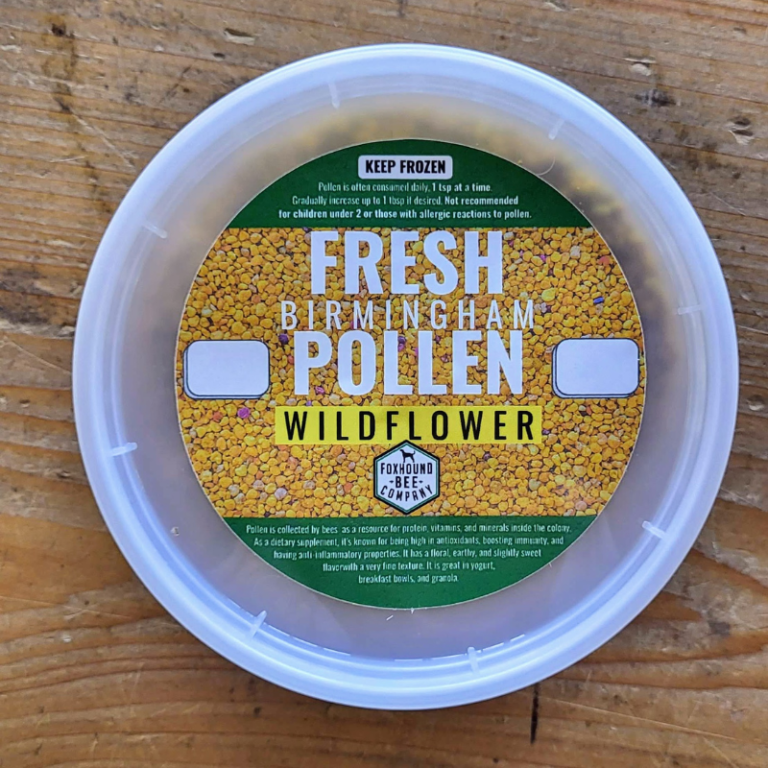
Bee pollen has been gaining recognition as a superfood, and many consumers swear by its potential health benefits. This perception of health benefits makes bee pollen a lucrative product for beekeepers to sell and can fetch a premium when marketed well to the right community.Â
It’s not just the health-conscious who laud its virtues; even allergy sufferers find that consuming pollen can be more effective for allergy relief than local honey.
Raw, local honey definitely has pollen in it, but you would have to consume a lot of honey to get a reasonable amount of pollen to help with allergies. Eating pollen pellets directly from plants in your area is the best way to combat local grass and tree allergies naturally.
Bee pollen’s versatility also contributes to its popularity. It can be used as a topping for cereals, salads, or yogurt or even blended into smoothies. Beekeepers can tap into these consumption trends, using personalized content and ads to market their collected pollen to potential customers.
Selling Pollen

Bee pollen has been gaining recognition as a superfood, and many consumers swear by its potential health benefits. This perception of health benefits makes bee pollen a lucrative product for beekeepers to sell and can fetch a premium when marketed well to the right community.Â
It’s not just the health-conscious who laud its virtues; even allergy sufferers find that consuming pollen can be more effective for allergy relief than local honey.
Raw, local honey definitely has pollen in it, but you would have to consume a lot of honey to get a reasonable amount of pollen to help with allergies. Eating pollen pellets directly from plants in your area is the best way to combat local grass and tree allergies naturally.
Bee pollen’s versatility also contributes to its popularity. It can be used as a topping for cereals, salads, or yogurt or even blended into smoothies. Beekeepers can tap into these consumption trends, using personalized content and ads to market their collected pollen to potential customers.
Feeding Pollen Back To Bees
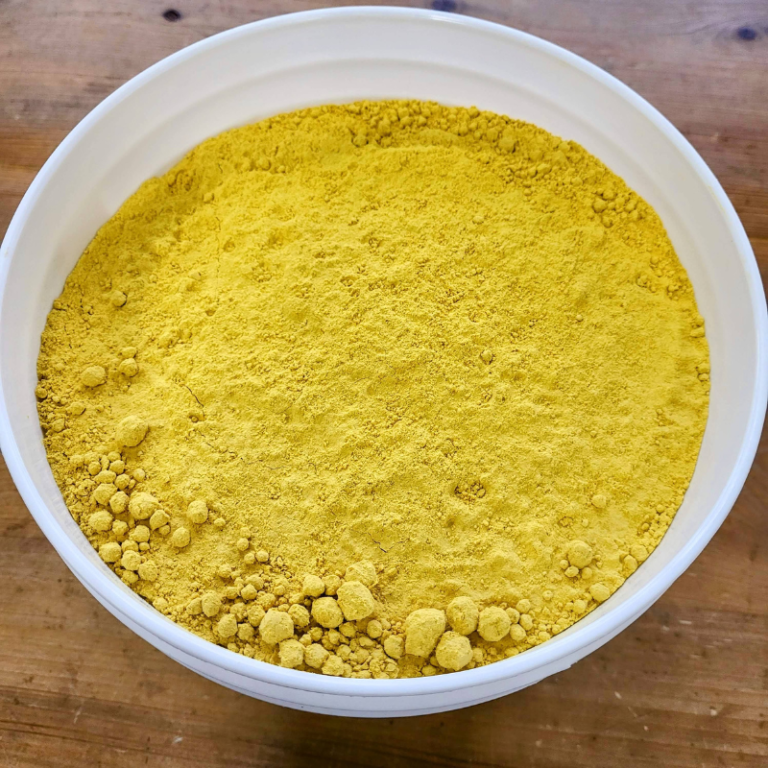
While selling pollen can be profitable, beekeepers often need to feed some of the collected pollen back to their bees. This practice is especially important in areas where local plants do not produce enough pollen, thereby necessitating supplementation to maintain colony health. Pollen is a rich source of proteins, vitamins, and minerals, making it an essential part of honey bee nutrition.
Inside the hive, the bees use the pollen as a protein source to feed young honey bee larva. The worker bees will actually consume the pollen and then produce royal jelly or food for their growing brood. They will also store it the cells to create something called bee bread. Bee bread is a mixture of pollen, enzymes from the bees and natural fermentation.
However, feeding purchased pollen back to bees requires careful consideration. Beekeepers must ensure they procure high-quality pollen from reputable sources while taking care not to introduce potentially harmful substances to their colonies. With the right precautions, feeding pollen back to bees can help maintain a healthy and productive hive.
Most often, beekeepers are using a pollen substitute made from soy protein and feeding that to their bees. Natural bee pollen pellets is cost prohibitive for many beekeepers and is not always fed directly back to the honey bees.
Feeding Pollen Back To Bees

While selling pollen can be profitable, beekeepers often need to feed some of the collected pollen back to their bees. This practice is especially important in areas where local plants do not produce enough pollen, thereby necessitating supplementation to maintain colony health. Pollen is a rich source of proteins, vitamins, and minerals, making it an essential part of honey bee nutrition.
Inside the hive, the bees use the pollen as a protein source to feed young honey bee larva. The worker bees will actually consume the pollen and then produce royal jelly or food for their growing brood. They will also store it the cells to create something called bee bread. Bee bread is a mixture of pollen, enzymes from the bees and natural fermentation.
However, feeding purchased pollen back to bees requires careful consideration. Beekeepers must ensure they procure high-quality pollen from reputable sources while taking care not to introduce potentially harmful substances to their colonies. With the right precautions, feeding pollen back to bees can help maintain a healthy and productive hive.
Most often, beekeepers are using a pollen substitute made from soy protein and feeding that to their bees. Natural bee pollen pellets is cost prohibitive for many beekeepers and is not always fed directly back to the honey bees.
How Pollen Traps Work
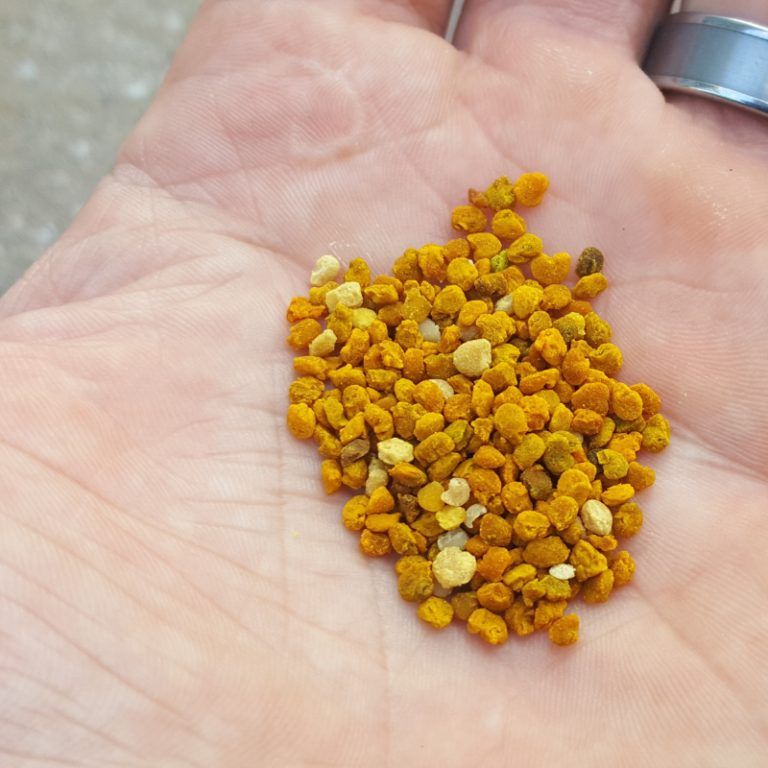
Pollen trapping is a fascinating process that requires a delicate balance between collection efficiency and the well-being of the bees. The primary tool used for this purpose is a pollen trap, which works by partially restricting the entrance to the colony. As the bees squeeze through these narrow entrances, some of the pollen from their pollen baskets is dislodged and falls into a collection tray.
Each honey bee that comes back into the hive has to crawl through these small holes that are just big enough to let the bee through but small enough to remove some of the pollen from its back legs. The best pollen traps allow the bees to leave unrestricted and only restrict their movement as they come back in.
A well-designed pollen trap doesn’t capture all the pollen entering the hive. It’s vital to let some pollen through for the bees to feed their larvae and sustain the hive. The balance between collecting pollen and ensuring the bees’ needs are met is a careful one, requiring careful monitoring of the entrance and the inside of the hive to make sure the colony is healthy.
Pollen traps, designed in various styles, cater to different hive configurations and beekeeping practices. Regardless of the design, the primary aim remains the same – to collect pollen efficiently without causing harm to the bees or hindering their normal activities.
But not all pollen traps are made the same, and the pollen collected can vary from one location to another and from one hive to another.
How Pollen Traps Work

Pollen trapping is a fascinating process that requires a delicate balance between collection efficiency and the well-being of the bees. The primary tool used for this purpose is a pollen trap, which works by partially restricting the entrance to the colony. As the bees squeeze through these narrow entrances, some of the pollen from their pollen baskets is dislodged and falls into a collection tray.
Each honey bee that comes back into the hive has to crawl through these small holes that are just big enough to let the bee through but small enough to remove some of the pollen from its back legs. The best pollen traps allow the bees to leave unrestricted and only restrict their movement as they come back in.
A well-designed pollen trap doesn’t capture all the pollen entering the hive. It’s vital to let some pollen through for the bees to feed their larvae and sustain the hive. The balance between collecting pollen and ensuring the bees’ needs are met is a careful one, requiring careful monitoring of the entrance and the inside of the hive to make sure the colony is healthy.
Pollen traps, designed in various styles, cater to different hive configurations and beekeeping practices. Regardless of the design, the primary aim remains the same – to collect pollen efficiently without causing harm to the bees or hindering their normal activities.
But not all pollen traps are made the same, and the pollen collected can vary from one location to another and from one hive to another.
How Bees Get In And Out Of Pollen Traps
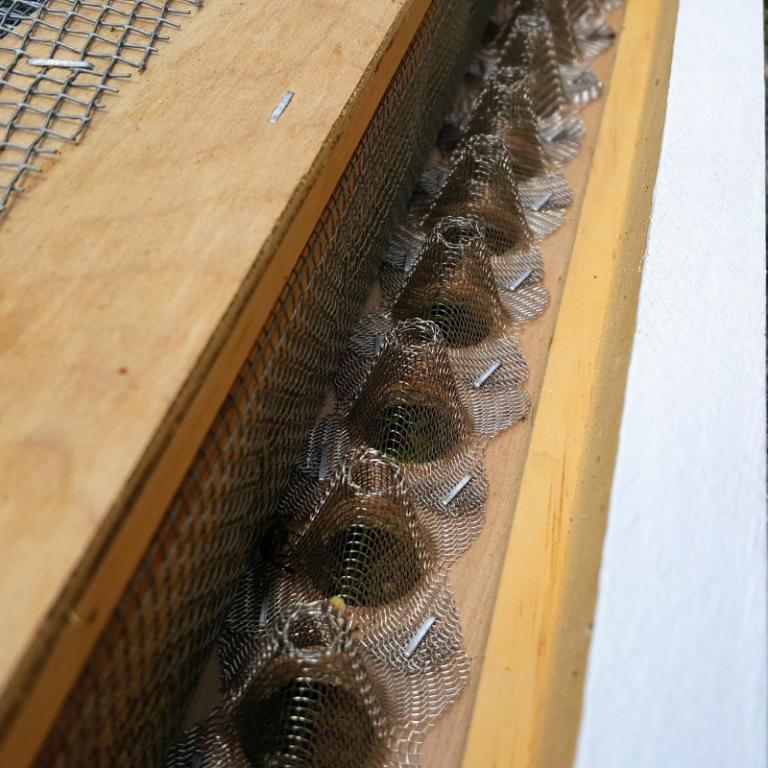
The Sundance pollen traps, which we will talk about later, are great at letting bees out and back in. The bees will exit unrestricted through cones on the trap.Â
These cones allow the bees, including drones and queens, to leave the nest easily. Cheaper traps may not have an exit cone, but simply a whole in the side of the trap.
When the bees come back through the Sundance trap or any pollen collection trap, they have to enter through one or a series of small holes.Â
These holes can be made of either wire mesh or a plastic grid. Some of these holes are very small and restrict the bee’s movement significantly, and others are right-sized to allow the honey bee to get through but also remove some pollen.
The simpler plastic traps often require the bees to work hard to get in and also out of the hive. So it’s important to monitor the entrance to see how well the bees are working through the trap.
How Bees Get In And Out Of Pollen Traps

The Sundance pollen traps, which we will talk about later, are great at letting bees out and back in. The bees will exit unrestricted through cones on the trap.Â
These cones allow the bees, including drones and queens, to leave the nest easily. Cheaper traps may not have an exit cone, but simply a whole in the side of the trap.
When the bees come back through the Sundance trap or any pollen collection trap, they have to enter through one or a series of small holes.Â
These holes can be made of either wire mesh or a plastic grid. Some of these holes are very small and restrict the bee’s movement significantly, and others are right-sized to allow the honey bee to get through but also remove some pollen.
The simpler plastic traps often require the bees to work hard to get in and also out of the hive. So it’s important to monitor the entrance to see how well the bees are working through the trap.
Types of Pollen Traps

When it comes to pollen traps, beekeepers have a range of options to choose from. From entrance pollen traps and wooden bee hive pollen traps to 10-8 frame entrance pollen traps, there’s a variety to suit every need. Among these, two types stand out for their efficiency and popularity – the Sundance pollen traps and the front porch style pollen traps.
The Sundance pollen traps, made by the Ross Rounds Company, are considered the best on the market. These traps produce exceptionally clean pollen and are available in 8 and 10 frame options, with top and bottom mounted options.
On the other hand, front porch style pollen traps are a more affordable alternative, designed to be positioned at the hive’s entrance and collect pollen as bees enter the hive. Each of these trap types has its advantages and challenges, and beekeepers must choose based on their specific needs and resources.
With all pollen traps, there is a breaking-in period when you first install them. More on that below.
Types of Pollen Traps

When it comes to pollen traps, beekeepers have a range of options to choose from. From entrance pollen traps and wooden bee hive pollen traps to 10-8 frame entrance pollen traps, there’s a variety to suit every need. Among these, two types stand out for their efficiency and popularity – the Sundance pollen traps and the front porch style pollen traps.
The Sundance pollen traps, made by the Ross Rounds Company, are considered the best on the market. These traps produce exceptionally clean pollen and are available in 8 and 10 frame options, with top and bottom mounted options.
On the other hand, front porch style pollen traps are a more affordable alternative, designed to be positioned at the hive’s entrance and collect pollen as bees enter the hive. Each of these trap types has its advantages and challenges, and beekeepers must choose based on their specific needs and resources.
With all pollen traps, there is a breaking-in period when you first install them. More on that below.
Sundance Pollen Traps
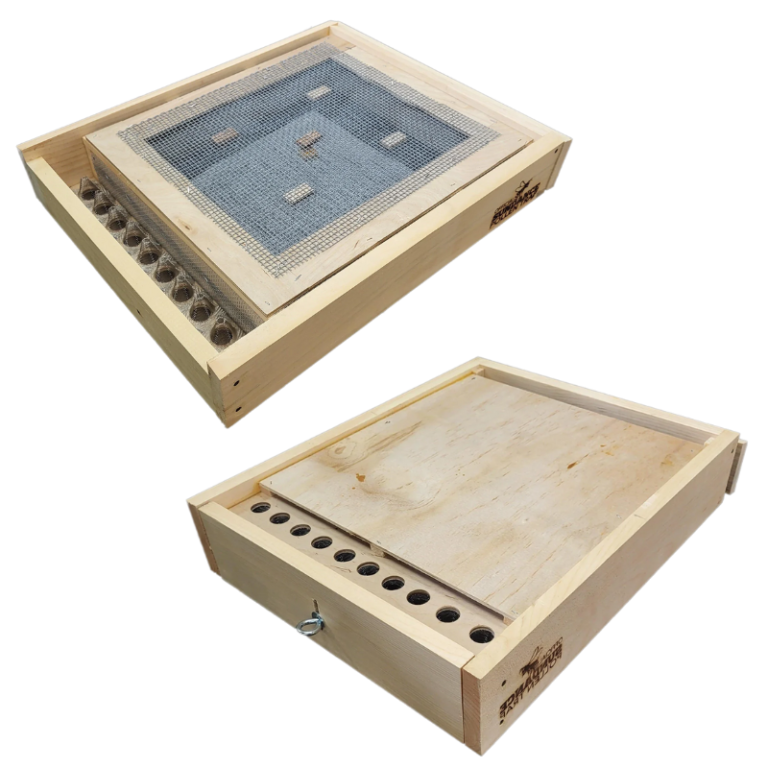
Pollen traps don’t get much better than the Sundance. Known for their high-quality construction and efficient performance, Sundance pollen traps are a favorite among beekeepers.Â
These traps are available in 8 and 10 frame options, catering to a variety of hive sizes. Furthermore, beekeepers can choose between top and bottom mounted options, depending on their hive configuration and personal preferences.
Another unique feature of Sundance pollen traps is their ability to yield exceptionally clean pollen. The top entrance Sundance pollen traps, for instance, are known to yield cleaner pollen with less debris.Â
This attention to cleanliness and efficiency makes Sundance pollen traps a worthy investment for any beekeeper serious about pollen collection. These traps are not cheap, but they will last a long time and can quickly pay for themselves with the sale of the pollen.
Sundance Pollen Traps

Pollen traps don’t get much better than the Sundance. Known for their high-quality construction and efficient performance, Sundance pollen traps are a favorite among beekeepers.Â
These traps are available in 8 and 10 frame options, catering to a variety of hive sizes. Furthermore, beekeepers can choose between top and bottom mounted options, depending on their hive configuration and personal preferences.
Another unique feature of Sundance pollen traps is their ability to yield exceptionally clean pollen. The top entrance Sundance pollen traps, for instance, are known to yield cleaner pollen with less debris.Â
This attention to cleanliness and efficiency makes Sundance pollen traps a worthy investment for any beekeeper serious about pollen collection. These traps are not cheap, but they will last a long time and can quickly pay for themselves with the sale of the pollen.
Bottom Mount Pollen Traps
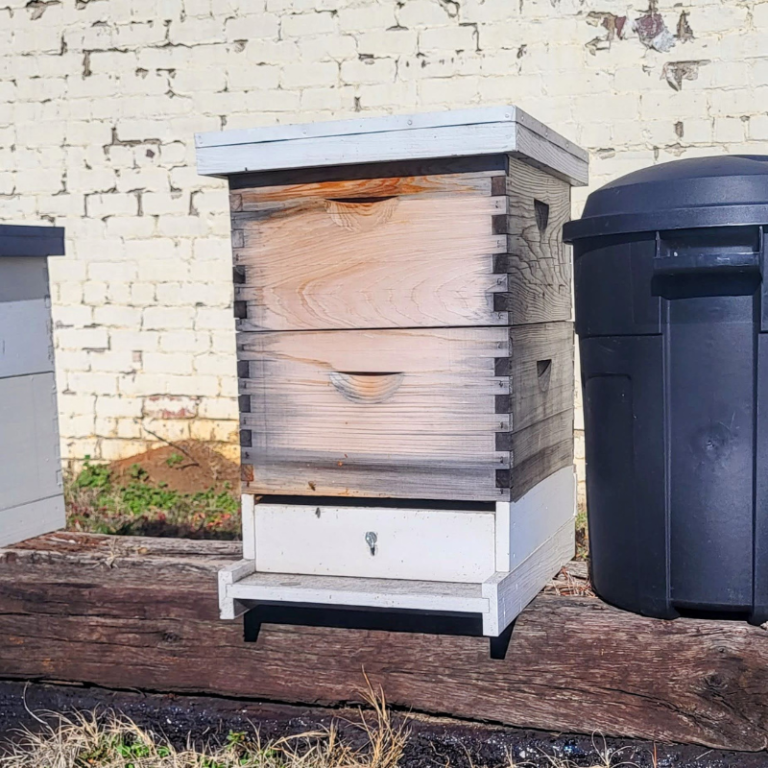
Sundance bottom mount pollen traps are positioned underneath the boxes but above the bottom board. They are the most common style of trap because most beekeepers use a bottom entrance. The removable tray for the pollen can either be removed from the back or from the side. The side-mounted tray is typically for beekeepers keeping bees on pallets.
The bottom-mounted trap is known to collect a little more debris because debris from the hive can fall down into the trap. But there is a board that keeps most of that from getting into the tray, so the debris is minimal.
The main advantage of the bottom-mounted trap is it can be turned on and off easily. You do have to lift the hive to install it initially, but it can be left on the hive permanently and turned on and off as needed.
Bottom Mount Pollen Traps

Sundance bottom mount pollen traps are positioned underneath the boxes but above the bottom board. They are the most common style of trap because most beekeepers use a bottom entrance. The removable tray for the pollen can either be removed from the back or from the side. The side-mounted tray is typically for beekeepers keeping bees on pallets.
The bottom-mounted trap is known to collect a little more debris because debris from the hive can fall down into the trap. But there is a board that keeps most of that from getting into the tray, so the debris is minimal.
The main advantage of the bottom-mounted trap is it can be turned on and off easily. You do have to lift the hive to install it initially, but it can be left on the hive permanently and turned on and off as needed.
Top Mounted Pollen Traps
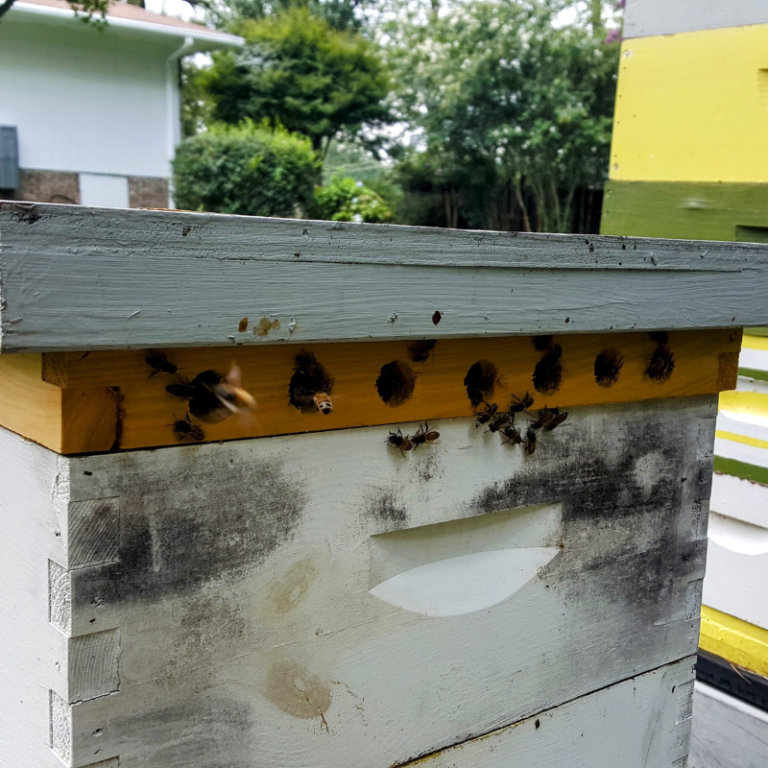
Top-mounted pollen traps are installed above the brood chambers of the hive, providing a cleaner method for pollen collection. These traps are designed to collect pollen as bees enter the upper part of the hive resulting in cleaner pollen with fewer pieces of bees or wax in the trap. The downside is that the bees have to be adjusted to use a top entrance, which will take an extra step if using a bottom entrance.
When using the top entrance trap, it cannot be turned on and off. It has to be removed completely to stop collecting pollen. But a new top entrance has to be put in place as the bees are used to a top entrance from the pollen trap.
Top Mounted Pollen Traps

Top-mounted pollen traps are installed above the brood chambers of the hive, providing a cleaner method for pollen collection. These traps are designed to collect pollen as bees enter the upper part of the hive resulting in cleaner pollen with fewer pieces of bees or wax in the trap. The downside is that the bees have to be adjusted to use a top entrance, which will take an extra step if using a bottom entrance.
When using the top entrance trap, it cannot be turned on and off. It has to be removed completely to stop collecting pollen. But a new top entrance has to be put in place as the bees are used to a top entrance from the pollen trap.
Front Porch Style Pollen Traps
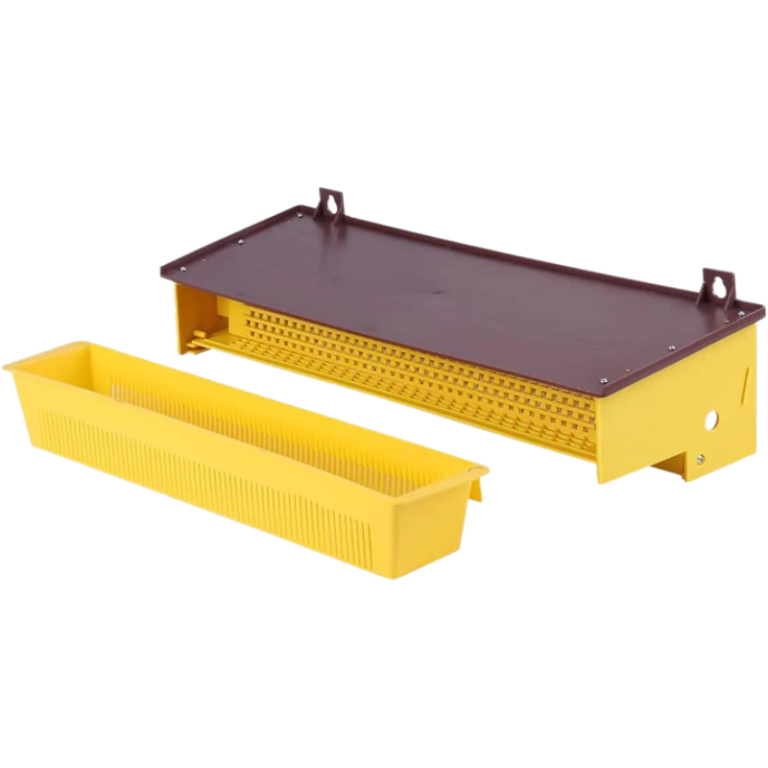
When we first started using a pollen trap, we started with the entrance trap or front porch trap. These ones are placed over the normal entrance of the hive. They can work well but have a small capacity for storing the collected pollen. They are a great intro into collecting bee pollen and can work quite well.
Despite their effectiveness in pollen collection, front porch-style traps present their own set of challenges. For one, they can be prone to molding and overfilling if not emptied frequently. Additionally, they require vigilant maintenance to ensure their effectiveness and longevity. Because they are simpler, it may take some extra effort to make sure they seal well, and the bees don’t find a separate, less restrictive way into the hive.
These traps can be a little tricky because they will often warp and are more susceptible to mold than the Sundance traps. The doors on these traps can be difficult to open and close at times. We have been using these before and found that the door is actually closed when we thought it was open.
Front Porch Style Pollen Traps

When we first started using a pollen trap, we started with the entrance trap or front porch trap. These ones are placed over the normal entrance of the hive. They can work well but have a small capacity for storing the collected pollen. They are a great intro into collecting bee pollen and can work quite well.
Despite their effectiveness in pollen collection, front porch-style traps present their own set of challenges. For one, they can be prone to molding and overfilling if not emptied frequently. Additionally, they require vigilant maintenance to ensure their effectiveness and longevity. Because they are simpler, it may take some extra effort to make sure they seal well, and the bees don’t find a separate, less restrictive way into the hive.
These traps can be a little tricky because they will often warp and are more susceptible to mold than the Sundance traps. The doors on these traps can be difficult to open and close at times. We have been using these before and found that the door is actually closed when we thought it was open.
Installing a Pollen Trap
Installing a Pollen Trap
Before putting a trap on a colony, it takes some planning and verifying of the quality of the hive. It’s not possible to put a trap on a hive and expect it to function like a normal colony. Hives with pollen traps actively on, do not always make much honey. The bees will compensate for the loss of pollen by increasing their pollen collection workforce. And this will take away from the nectar-collecting workforce.
It is possible to install a trap, leave it running for a while, then turn it off, and then turn it back on. We recommend installing the trap and leaving it on for at least a month at a time. This gives the bees plenty of time to compensate and get used to the trap.
Before putting a trap on a colony, it takes some planning and verifying of the quality of the hive. It’s not possible to put a trap on a hive and expect it to function like a normal colony. Hives with pollen traps actively on, do not always make much honey. The bees will compensate for the loss of pollen by increasing their pollen collection workforce. And this will take away from the nectar-collecting workforce.
It is possible to install a trap, leave it running for a while, then turn it off, and then turn it back on. We recommend installing the trap and leaving it on for at least a month at a time. This gives the bees plenty of time to compensate and get used to the trap.
Closing all other entrances
Closing all other entrances
Before placing the trap on the hive, it’s important to make sure the hive does not have additional entrances. A rotten corner of the box will be a great place for the bees to enter and exit the hive. If you place a pollen trap on the hive, they will use any other entrance available to them before using the trap.
Before placing the trap on the hive, it’s important to make sure the hive does not have additional entrances. A rotten corner of the box will be a great place for the bees to enter and exit the hive. If you place a pollen trap on the hive, they will use any other entrance available to them before using the trap.
Adjusting to The New Entrance
Adjusting to The New Entrance
When placing the pollen trap, the bees will need to adjust to having a new entrance. This usually will take a couple of hours to up to a few days. When the physical entrance of the colony changes, the bees are not used to the change and will have trouble getting into the hive. They will look for entrances all over the hive until they eventually figure out how to navigate the new entrance.
While it may look like chaos, the bees figure it out, but it may take a few days. One thing to check is to ensure the bees are coming out of the pollen trap. If they can get out, then they will get in.
It’s good to install the trap on a day that isn’t very hot. An overcast day is a good day to install the trap as it prevents the hive from getting too hot. A dense colony full of bees struggling to get out of the hive can cause the colony to overheat.
When placing the pollen trap, the bees will need to adjust to having a new entrance. This usually will take a couple of hours to up to a few days. When the physical entrance of the colony changes, the bees are not used to the change and will have trouble getting into the hive. They will look for entrances all over the hive until they eventually figure out how to navigate the new entrance.
While it may look like chaos, the bees figure it out, but it may take a few days. One thing to check is to ensure the bees are coming out of the pollen trap. If they can get out, then they will get in.
It’s good to install the trap on a day that isn’t very hot. An overcast day is a good day to install the trap as it prevents the hive from getting too hot. A dense colony full of bees struggling to get out of the hive can cause the colony to overheat.
Top Entrance Pollen Traps
Top Entrance Pollen Traps
If using a top entrance pollen trap, you want to orient the bees to using a top entrance before adding the trap. A colony of honey bees that are used to a bottom entrance will not easily adjust to a top entrance and a pollen trap simultaneously. Introduce a top entrance where the pollen trap entrance will be and let them use that for at least a week or two. Then you can introduce the top pollen trap.
If using a top entrance pollen trap, you want to orient the bees to using a top entrance before adding the trap. A colony of honey bees that are used to a bottom entrance will not easily adjust to a top entrance and a pollen trap simultaneously. Introduce a top entrance where the pollen trap entrance will be and let them use that for at least a week or two. Then you can introduce the top pollen trap.
Colony Selection
Colony Selection
Selecting an appropriate colony for pollen collection is vital. A strong colony with a young queen is ideal for a successful pollen collection. Younger queens contribute to the growth of larger colonies, increased comb building, and the storage of more honey and pollen, all of which facilitate efficient pollen collection.
Preventing the bees from swarming or superseding the queen is also important. Swarming can drastically reduce the population of a colony, affecting its productivity. Supercedure on the other hand, can disrupt the colony’s activities as the bees attempt to raise a new queen. Therefore, maintaining a strong, stable colony is essential for effective pollen collection and brood rearing.
Selecting an appropriate colony for pollen collection is vital. A strong colony with a young queen is ideal for a successful pollen collection. Younger queens contribute to the growth of larger colonies, increased comb building, and the storage of more honey and pollen, all of which facilitate efficient pollen collection.
Preventing the bees from swarming or superseding the queen is also important. Swarming can drastically reduce the population of a colony, affecting its productivity. Supercedure on the other hand, can disrupt the colony’s activities as the bees attempt to raise a new queen. Therefore, maintaining a strong, stable colony is essential for effective pollen collection and brood rearing.
Collecting and Processing Bee Pollen
Collecting and Processing Bee Pollen
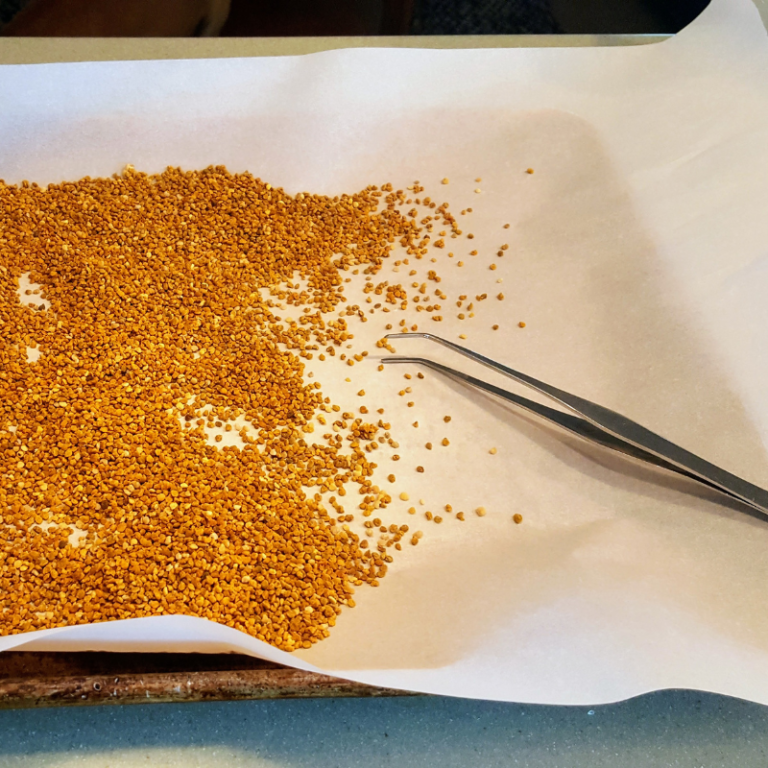
A good pollen trap is only the first step in pollen collection. Once the pollen is collected, it needs to be processed before it can be used or sold. This multi-step process includes:
- Harvesting the pollen from the traps
- Cleaning the pollen to remove any impurities
- Freezing the pollen to preserve its freshness
- Packaging the pollen for sale or storage
Each of these steps is crucial in ensuring the quality and freshness of the collected pollen. Proper harvesting prevents molding, thorough cleaning removes debris, adequate freezing preserves the pollen’s nutritional value, and appropriate packaging ensures the pollen stays fresh until it reaches the consumer.

A good pollen trap is only the first step in pollen collection. Once the pollen is collected, it needs to be processed before it can be used or sold. This multi-step process includes:
- Harvesting the pollen from the traps
- Cleaning the pollen to remove any impurities
- Freezing the pollen to preserve its freshness
- Packaging the pollen for sale or storage
Each of these steps is crucial in ensuring the quality and freshness of the collected pollen. Proper harvesting prevents molding, thorough cleaning removes debris, adequate freezing preserves the pollen’s nutritional value, and appropriate packaging ensures the pollen stays fresh until it reaches the consumer.
Harvesting Pollen
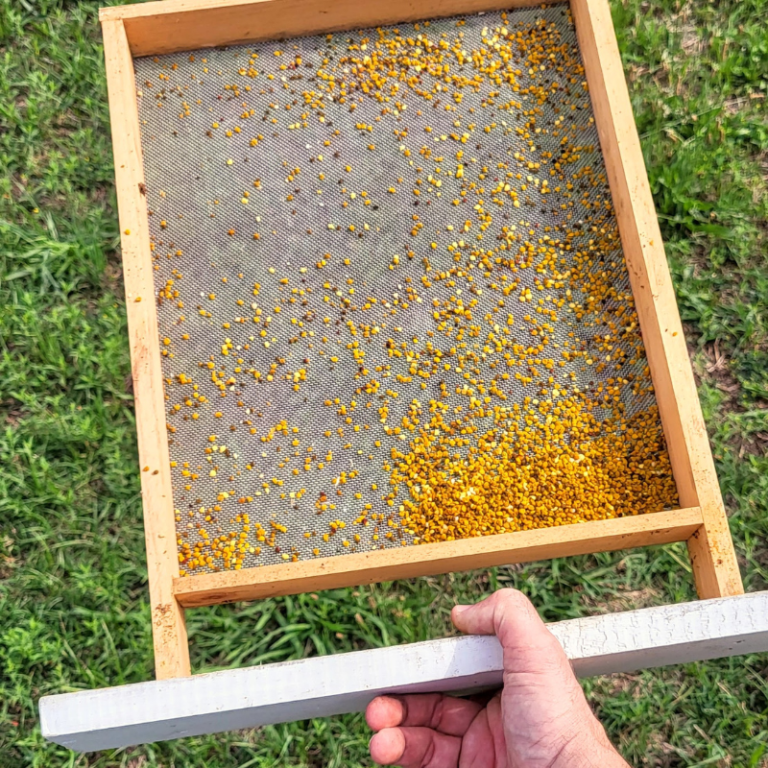
The first step in processing bee pollen is to collect bee pollen from the pollen trap. This should be done frequently, preferably daily or every other day, to prevent the stored pollen from molding. Frequent harvesting maintains pollen freshness and prevents its buildup in the trap, which could attract pests or cause overfilling.
When the traps start to get full, you begin wasting the efforts of the bees, and the pellets start to pack into the collection drawer. When they get packed in there, they start to mold. Plant pollen has a fair amount of moisture in it.
Cleaning
Once the pollen is harvested, it must be cleaned to remove debris. This can include beetles, bees, wings, or other waste materials that may have ended up in the pollen trap. Cleaning the pollen in bulk can be done by removing visible debris, spreading the pollen on a screen or flat tray, and then visually picking out the debris. Tweezers are very helpful with this.
A more commercial way of cleaning pollen is to do it with a fan and through agitation. There are many machines for doing this, and the technique is the same as that used for cleaning and harvesting seeds.
Freezing
After the pollen is cleaned, it needs to be preserved to maintain its quality until it is used or sold. Freezing is the preferred method for preserving bee pollen as it helps maintain its nutritional value and freshness for an extended period.
The optimum temperature for freezing bee pollen is in the freezer. Bee pollen can be stored in the freezer for an indefinite period, making it a practical and efficient way of preserving the quality of the harvested pollen. By freezing the pollen directly from the trap, beekeepers can preserve its quality until it is ready to be used or sold.
Harvesting Pollen

The first step in processing bee pollen is to collect bee pollen from the pollen trap. This should be done frequently, preferably daily or every other day, to prevent the stored pollen from molding. Frequent harvesting maintains pollen freshness and prevents its buildup in the trap, which could attract pests or cause overfilling.
When the traps start to get full, you begin wasting the efforts of the bees, and the pellets start to pack into the collection drawer. When they get packed in there, they start to mold. Plant pollen has a fair amount of moisture in it.
Cleaning
Once the pollen is harvested, it must be cleaned to remove debris. This can include beetles, bees, wings, or other waste materials that may have ended up in the pollen trap. Cleaning the pollen in bulk can be done by removing visible debris, spreading the pollen on a screen or flat tray, and then visually picking out the debris. Tweezers are very helpful with this.
A more commercial way of cleaning pollen is to do it with a fan and through agitation. There are many machines for doing this, and the technique is the same as that used for cleaning and harvesting seeds.
Freezing
After the pollen is cleaned, it needs to be preserved to maintain its quality until it is used or sold. Freezing is the preferred method for preserving bee pollen as it helps maintain its nutritional value and freshness for an extended period.
The optimum temperature for freezing bee pollen is in the freezer. Bee pollen can be stored in the freezer for an indefinite period, making it a practical and efficient way of preserving the quality of the harvested pollen. By freezing the pollen directly from the trap, beekeepers can preserve its quality until it is ready to be used or sold.
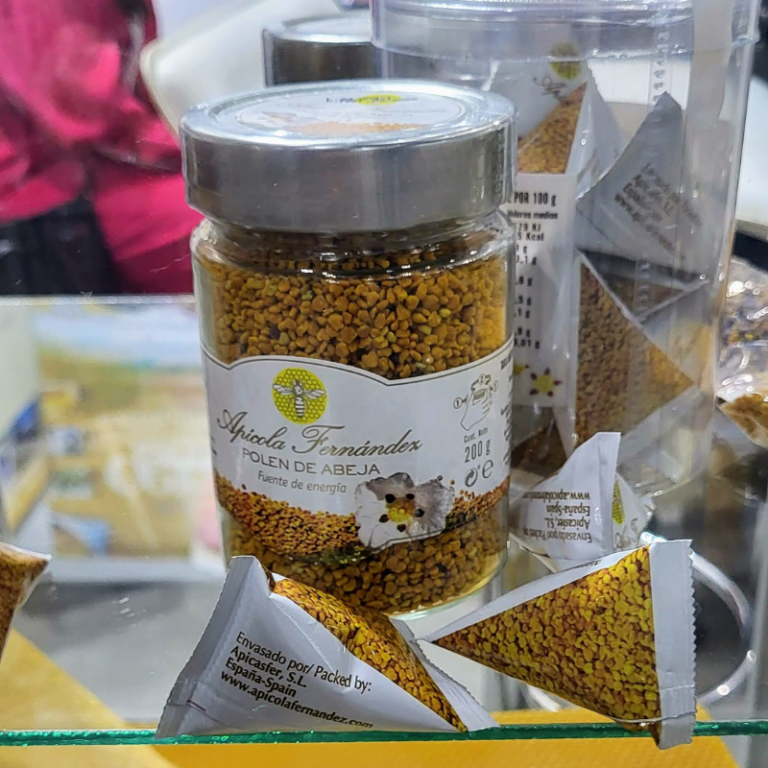
Packaging and Storage
Packaging and storage mark the final step in bee pollen processing. Proper packaging is crucial to maintain the freshness of the pollen and prevent moisture and air from affecting its quality. Clear glass containers are recommended for packaging bee pollen as they facilitate visibility and help maintain freshness.
For long-term storage, the pollen should be transferred from the original packaging to an airtight glass jar. Refrigeration or freezing can extend the shelf life of bee pollen, with refrigeration extending it up to one year and freezing prolonging it for 1 to 2 years. With the right packaging and storage methods, beekeepers can ensure their harvested pollen retains its freshness and quality until it’s ready to be used or sold.

Packaging and Storage
Packaging and storage mark the final step in bee pollen processing. Proper packaging is crucial to maintain the freshness of the pollen and prevent moisture and air from affecting its quality. Clear glass containers are recommended for packaging bee pollen as they facilitate visibility and help maintain freshness.
For long-term storage, the pollen should be transferred from the original packaging to an airtight glass jar. Refrigeration or freezing can extend the shelf life of bee pollen, with refrigeration extending it up to one year and freezing prolonging it for 1 to 2 years. With the right packaging and storage methods, beekeepers can ensure their harvested pollen retains its freshness and quality until it’s ready to be used or sold.
Cautions and Best Practices for Beekeepers
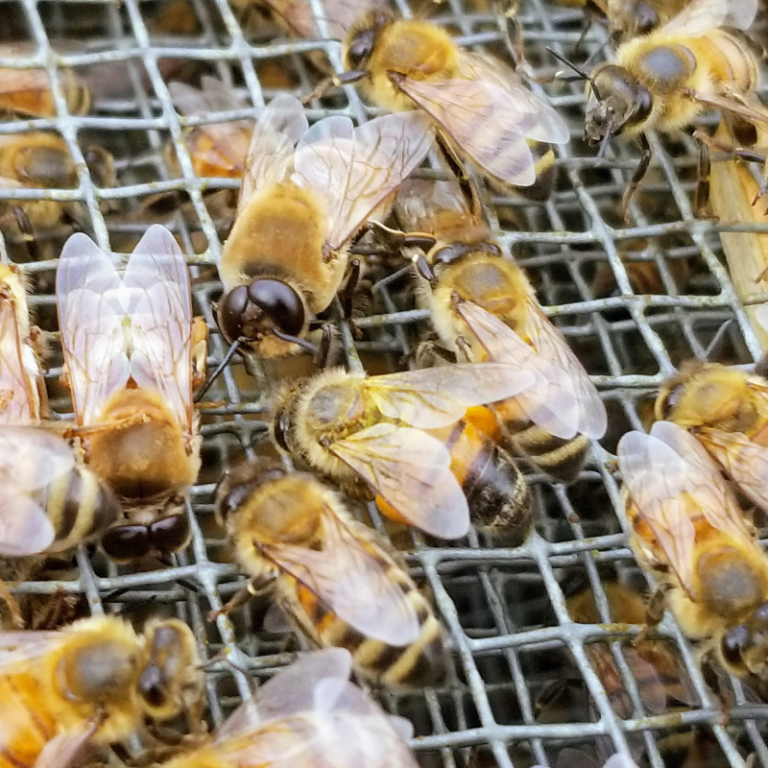
While bee pollen collection can be a rewarding endeavor, it is not without its challenges. Beekeepers need to be cautious when collecting pollen, taking into consideration factors such as:
- Colony selection
- Collection limitations
- Trap maintenance
- The risk of small hive beetles infesting pollen traps.
Let’s explore each of these aspects in detail. Understanding these cautions and following best practices can help beekeepers optimize their pollen collection process while ensuring the wellbeing of their bees. After all, the ultimate goal is to harvest high-quality pollen without compromising the health of the bee colony.
Cautions and Best Practices for Beekeepers

While bee pollen collection can be a rewarding endeavor, it is not without its challenges. Beekeepers need to be cautious when collecting pollen, taking into consideration factors such as:
- Colony selection
- Collection limitations
- Trap maintenance
- The risk of small hive beetles infesting pollen traps.
Let’s explore each of these aspects in detail. Understanding these cautions and following best practices can help beekeepers optimize their pollen collection process while ensuring the wellbeing of their bees. After all, the ultimate goal is to harvest high-quality pollen without compromising the health of the bee colony.
Collection Limitations
Collection Limitations
Beekeepers should understand the constraints tied to pollen collection. When a pollen trap is set, the foraging bees compensate for the loss of pollen by converting nectar foragers into pollen foragers. This shift can lead to a decrease in honey production but does not harm brood production.
It’s important to strike a balance between the need for pollen collection and the needs of the bee colony. Excessive pollen collection can exhaust flower resources and impact the bees’ vulnerability to parasites, foraging patterns, development, and longevity. Therefore, carefully monitoring and adjusting the pollen trap is essential to ensure a sustainable pollen collection process.
Beekeepers should understand the constraints tied to pollen collection. When a pollen trap is set, the foraging bees compensate for the loss of pollen by converting nectar foragers into pollen foragers. This shift can lead to a decrease in honey production but does not harm brood production.
It’s important to strike a balance between the need for pollen collection and the needs of the bee colony. Excessive pollen collection can exhaust flower resources and impact the bees’ vulnerability to parasites, foraging patterns, development, and longevity. Therefore, carefully monitoring and adjusting the pollen trap is essential to ensure a sustainable pollen collection process.
Swarming and Reuqeening with a Pollen Trap
Swarming and Reuqeening with a Pollen Trap
One thing you want to avoid happening is a hive requeening itself or swarming with a pollen trap on. A queen may find it difficult to leave the trap if she needs to leave. If she is able to leave, she will have trouble getting back into the hive after mating flights.
The same mesh that removes some of the pollen from the worker bees’ legs will also exclude the queen from getting in. This is definitely a situation you want to avoid, as it will cause the colony to be queenless.
One thing you want to avoid happening is a hive requeening itself or swarming with a pollen trap on. A queen may find it difficult to leave the trap if she needs to leave. If she is able to leave, she will have trouble getting back into the hive after mating flights.
The same mesh that removes some of the pollen from the worker bees’ legs will also exclude the queen from getting in. This is definitely a situation you want to avoid, as it will cause the colony to be queenless.
Trap Maintenance
Trap Maintenance
Another important aspect of pollen collection is pollen trap maintenance. Pollen traps made of wood should be painted to protect them from the elements and prolong their lifespan. It’s also important to reduce the buildup of pollen or packed pollen in the trap, as this can attract pests or lead to overfilling.
If not actively collecting bee pollen, the trap should be removed or in the off position. It’s very important to prevent a dead out from happening with a pollen trap on the hive. The debris and mess from small hive beetles and wax moths can produce a mess in a pollen trap. This is more true of the whole hive traps like Sundance and less true for the front entrance traps.
Another important aspect of pollen collection is pollen trap maintenance. Pollen traps made of wood should be painted to protect them from the elements and prolong their lifespan. It’s also important to reduce the buildup of pollen or packed pollen in the trap, as this can attract pests or lead to overfilling.
If not actively collecting bee pollen, the trap should be removed or in the off position. It’s very important to prevent a dead out from happening with a pollen trap on the hive. The debris and mess from small hive beetles and wax moths can produce a mess in a pollen trap. This is more true of the whole hive traps like Sundance and less true for the front entrance traps.
Small Hive Beetles in Pollen Traps
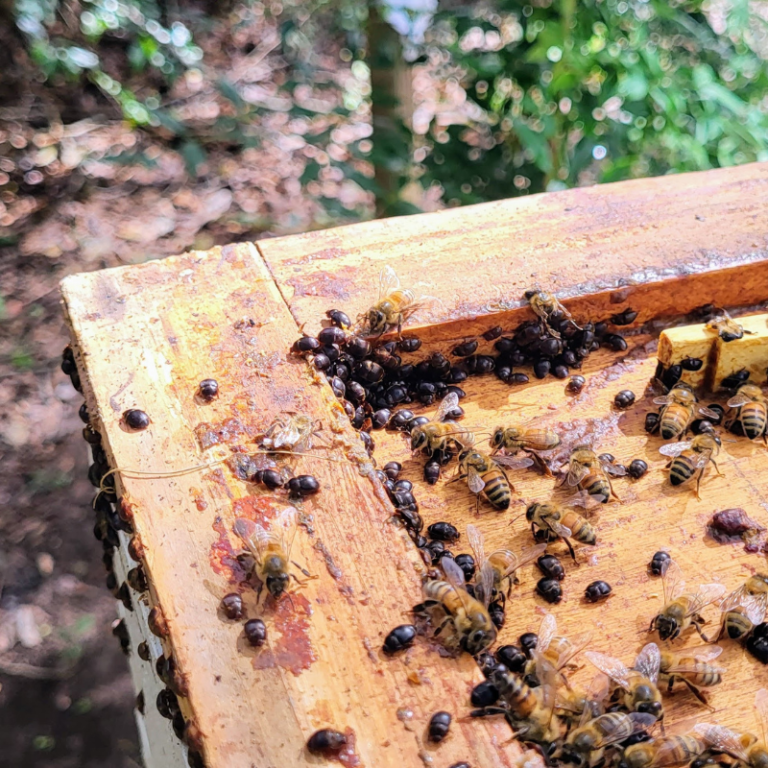
Small hive beetles, a common pest in beehives, can also plague pollen traps used by honey bees. Beetles can lay eggs in the collected pollen, leading to an infestation if not addressed promptly. To prevent such infestations, pollen traps should be emptied often, especially in warm weather when beetles are most active.
Preventing beetle infestations is not just about maintaining the quality of the collected pollen; it’s also about protecting the health of the bee colony. Beetles and their larvae can cause significant damage to a colony if left unchecked.
Small Hive Beetles in Pollen Traps

Small hive beetles, a common pest in beehives, can also plague pollen traps used by honey bees. Beetles can lay eggs in the collected pollen, leading to an infestation if not addressed promptly. To prevent such infestations, pollen traps should be emptied often, especially in warm weather when beetles are most active.
Preventing beetle infestations is not just about maintaining the quality of the collected pollen; it’s also about protecting the health of the bee colony. Beetles and their larvae can cause significant damage to a colony if left unchecked.
Frequently Asked Questions
Frequently Asked Questions
How do you gather bee pollen?
How do you gather bee pollen?
To gather bee pollen, use a pollen trap placed in front of, underneath or above the, where returning foragers need to pass through a mesh, causing the pollen to fall into a collection tray. This method makes it easy to collect pollen from the bees.
To gather bee pollen, use a pollen trap placed in front of, underneath or above the, where returning foragers need to pass through a mesh, causing the pollen to fall into a collection tray. This method makes it easy to collect pollen from the bees.
Is collecting bee pollen bad for bees?
Is collecting bee pollen bad for bees?
Collecting bee pollen is not bad for bees as only a reasonable amount is taken during the process, ensuring that the bees still have plenty of pollen to feed their own young. Not all pollen traps are made the same though, so it’s important to monitor their collection.
Collecting bee pollen is not bad for bees as only a reasonable amount is taken during the process, ensuring that the bees still have plenty of pollen to feed their own young. Not all pollen traps are made the same though, so it’s important to monitor their collection.
What is bee pollen and how is it collected?
What is bee pollen and how is it collected?
Bee pollen is collected by worker bees from plant anthers during their flower visits and is mixed with salivary gland secretion or nectar, stored in specific baskets on their hind legs. Each bee brings back only two pellets of bee pollen back to the hive per trip.
Bee pollen is collected by worker bees from plant anthers during their flower visits and is mixed with salivary gland secretion or nectar, stored in specific baskets on their hind legs. Each bee brings back only two pellets of bee pollen back to the hive per trip.
What is the purpose of a pollen trap?
What is the purpose of a pollen trap?
The purpose of a pollen trap is to collect pollen from bees as they enter the hive. It is harvested from the bees before the pollen ever goes into the hive.
The purpose of a pollen trap is to collect pollen from bees as they enter the hive. It is harvested from the bees before the pollen ever goes into the hive.
What are the different types of pollen traps available?
What are the different types of pollen traps available?
The different types of pollen traps available include entrance pollen traps, wooden bee hive pollen traps, and 10-8 frame entrance pollen traps. You can choose the one that best suits your needs.
The different types of pollen traps available include entrance pollen traps, wooden bee hive pollen traps, and 10-8 frame entrance pollen traps. You can choose the one that best suits your needs.
